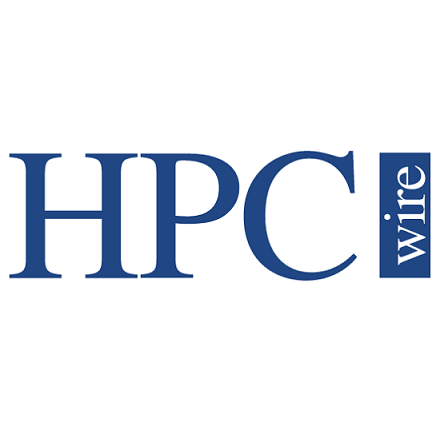
Rackspace Is Latest to Roll Bare Metal Service
April 26, 2018
Rackspace is expanding its managed private cloud services with the addition of six new bare metal instances that it collectively refers to as bare metal as a se Read more…

In OpenPOWER Play, IBM and Google Make Hyperscale Waves at Summit
April 6, 2016
OpenPOWER Foundation, the mostly IBM-driven effort to create an alternative architecture to Intel x86, took a major step forward today with the announcement of a joint effort by Google and Rackspace to co-develop an open data center server architecture design specification based on... Read more…

ANL Hosts HPC and Cloud Community Workshop
September 5, 2013
Last week, 30 stakeholders from research and industry met at Argonne National Labs to explore the potential for cloud-based cyber-infrastructure to support existing and emerging use cases in a range of research disciplines. Read more…

How Far Can Google Extend into the Cloud?
July 26, 2013
A study done by Deepfield found that Google accounts for approximately 25 percent of all internet traffic in the United States. That makes it more far-reaching than Facebook, Twitter, and Netflix combined. Read more…

Amazon, Server Prices, and Cloud Competition Accumulation
July 17, 2013
With the Rackspace’s announcement this month that they were getting involved with some of CERN’s cloud computing and the news of IBM acquiring SoftLayer last month, Amazon’s HPC instances may be facing some competition in the not so distant future. To battle that impending competition, Amazon reportedly dropped their price to rent their dedicated servers, machines that operate solely for one institution. Read more…

Rackspace CTO Responds to Amazon Price Drop
July 17, 2013
A public cloud setup and a hybrid cloud one are incompatible for comparison, according to Rackspace Chief Technology Officer John Engates. However, when Amazon announces a cost reduction that could seemingly cut into Rackspace’s business, and has incidentally has ended up dropping the Rackspace stock by 8.5 percent, there exists a necessity to shed light on those differences. Read more…

CERN and Rackspace Form OpenStack Partnership
July 3, 2013
Amazon Web Services is the cloud provider most often cited in scientific articles about high performance applications in the cloud. Meanwhile, cloud competitor Rackspace has not ventured much into the high scientific computing arena. That is, until this week when Rackspace, noted provider of cloud services, will be looking at getting into the cloud based HPC game by partnering with CERN, a development that was announced on Monday. Read more…

Internet Freedom Fighters: Amazon, Facebook, Rackspace and 54 More to Lobby Gov’t
September 25, 2012
This week, not one but two groups of IT heavyweights launched with plans to expand the scope of the Internet while protecting the free flow of ideas it provides. The Internet Infrastructure Coalition (i2Coalition) counts already 42 founding members, including infrastructure providers Rackspace, Softlayer, ProfitBricks and Tucows, while the Internet Association's 14-strong roster claims Web giants Google, Yahoo, Facebook, eBay and Amazon. Read more…

- Click Here for More Headlines

Whitepaper
How Direct Liquid Cooling Improves Data Center Energy Efficiency
Data centers are experiencing increasing power consumption, space constraints and cooling demands due to the unprecedented computing power required by today’s chips and servers. HVAC cooling systems consume approximately 40% of a data center’s electricity. These systems traditionally use air conditioning, air handling and fans to cool the data center facility and IT equipment, ultimately resulting in high energy consumption and high carbon emissions. Data centers are moving to direct liquid cooled (DLC) systems to improve cooling efficiency thus lowering their PUE, operating expenses (OPEX) and carbon footprint.
This paper describes how CoolIT Systems (CoolIT) meets the need for improved energy efficiency in data centers and includes case studies that show how CoolIT’s DLC solutions improve energy efficiency, increase rack density, lower OPEX, and enable sustainability programs. CoolIT is the global market and innovation leader in scalable DLC solutions for the world’s most demanding computing environments. CoolIT’s end-to-end solutions meet the rising demand in cooling and the rising demand for energy efficiency.
Download Now
Sponsored by CoolIT
Whitepaper
Transforming Industrial and Automotive Manufacturing
Divergent Technologies developed a digital production system that can revolutionize automotive and industrial scale manufacturing. Divergent uses new manufacturing solutions and their Divergent Adaptive Production System (DAPS™) software to make vehicle manufacturing more efficient, less costly and decrease manufacturing waste by replacing existing design and production processes.
Divergent initially used on-premises workstations to run HPC simulations but faced challenges because their workstations could not achieve fast enough simulation times. Divergent also needed to free staff from managing the HPC system, CAE integration and IT update tasks.
Download Now
Sponsored by TotalCAE
Advanced Scale Career Development & Workforce Enhancement Center
Featured Advanced Scale Jobs:
HPCwire Resource Library
HPCwire Product Showcase
© 2024 HPCwire. All Rights Reserved. A Tabor Communications Publication
HPCwire is a registered trademark of Tabor Communications, Inc. Use of this site is governed by our Terms of Use and Privacy Policy.
Reproduction in whole or in part in any form or medium without express written permission of Tabor Communications, Inc. is prohibited.
























